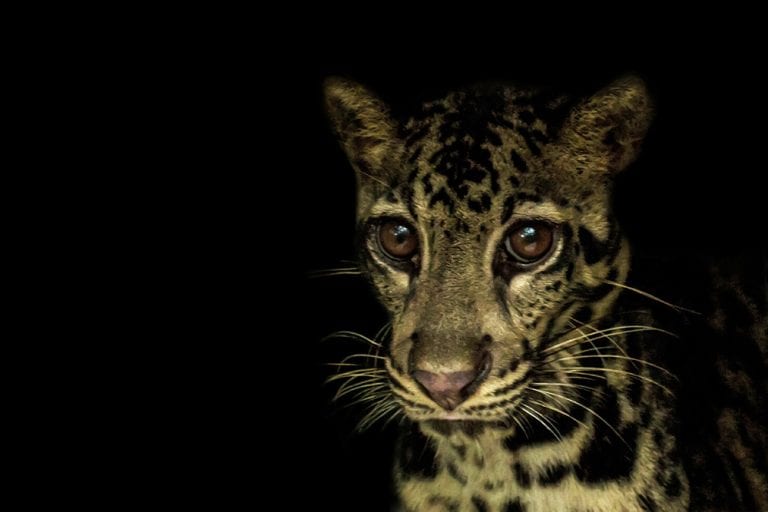In our previous article, we introduced the five species of wild cats found in Kalimantan (Indonesian Borneo): namely, the sunda leopard cat (Prionailurus javanensis; Horsfield, 1821) , clouded leopard (Neofelis diardi), bay cat (Catopuma badia), flat-headed cat (Prionailurus planiceps), and the marbled cat (Pardofelis marmorata).
All five of these species face a range of threats, including forest fires, poaching, and habitat loss due to human encroachment. Despite their protected status in Indonesia, our understanding of Borneo’s wild cats is limited and more research is needed to develop a successful conservation strategy. One way to go about this is by using camera traps.
Did you know about this wild cat, a protected species in Kalimantan?
The sunda leopard cat can be found across Indonesia. Let’s check out some more facts about this fascinating species!
Distribution in Indonesia
According to the guidebook for the identification of protected wildlife species (Mammalia) published by the Ministry of Environment and Forestry (KLHK) and the Indonesian Institute of Sciences (LIPI), the distribution areas include Sumatra, Kalimantan, Java and Bali. Commonly found in lowland and hills area.
Behavior


Physical characteristics
At first glance, the sunda leopard cat looks just like a miniature leopard, about the size of your average domestic cat but with longer legs. In Indonesian, the sunda leopard cat is often referred to as ‘root tiger’ or belacan.
According to the Guidebook for the Identification of Protected Wild Animals (Mammalia), published by the Ministry of Environment and Forestry (KLHK) and the Indonesian Institute of Sciences (LIPI), sunda leopard cats have the following physical characteristics:
Still from the guidebook for the identification of protected wildlife species (Mammalia) published by KLHK and LIPI, sunda leopard cats have the following physical characteristics:
- A body length of 400 – 435mm, tail length of 175 – 220mm, and foot length of 100 -115mm.
- A sunda leopard cat’s tail measures 40-60% of its body length and is gray in color, interrupted by brown-black spots that form transverse stripes across the tip.
- Its coat is fine and short, with a yellow-tinged underbelly.
- There are four black longitudinal stripes that reach from the front of the head around to the top of the neck.
- The sunda leopard cat’s favorite prey is mice, but it also hunts squirrels, birds, lizards, snakes and frogs.

Photo courtesy of BKSDA Kalteng and BNF Indonesia.
Ecological Role
The sunda leopard cat is a key predator in maintaining the balance of small prey populations, including several pest species.
Since 2014, sunda leopard cats have been categorized as Least Concern (LC) by the International Union for Conservation of Nature (IUCN) Red List of Threatened Species. Despite its reassuring conservation status, the leopard cat fulfills an important ecological role, warranting further study and protection.
Take Action Do you want to support the conservation of this Kalimantan’s wild cat through research activities carried out by the Central Kalimantan Conservation and Natural Resources Center (BKSDA) with BNF Indonesia? Donate today through our Cameras for Cats campaign and become a #WildCatWarrior!
Reference:
For PDF you can download here
Written by Yohanes Prahara, BNF’s Content Creator and Media Liaison
Illustration by Ferdinandus Eko/BNF Indonesia





